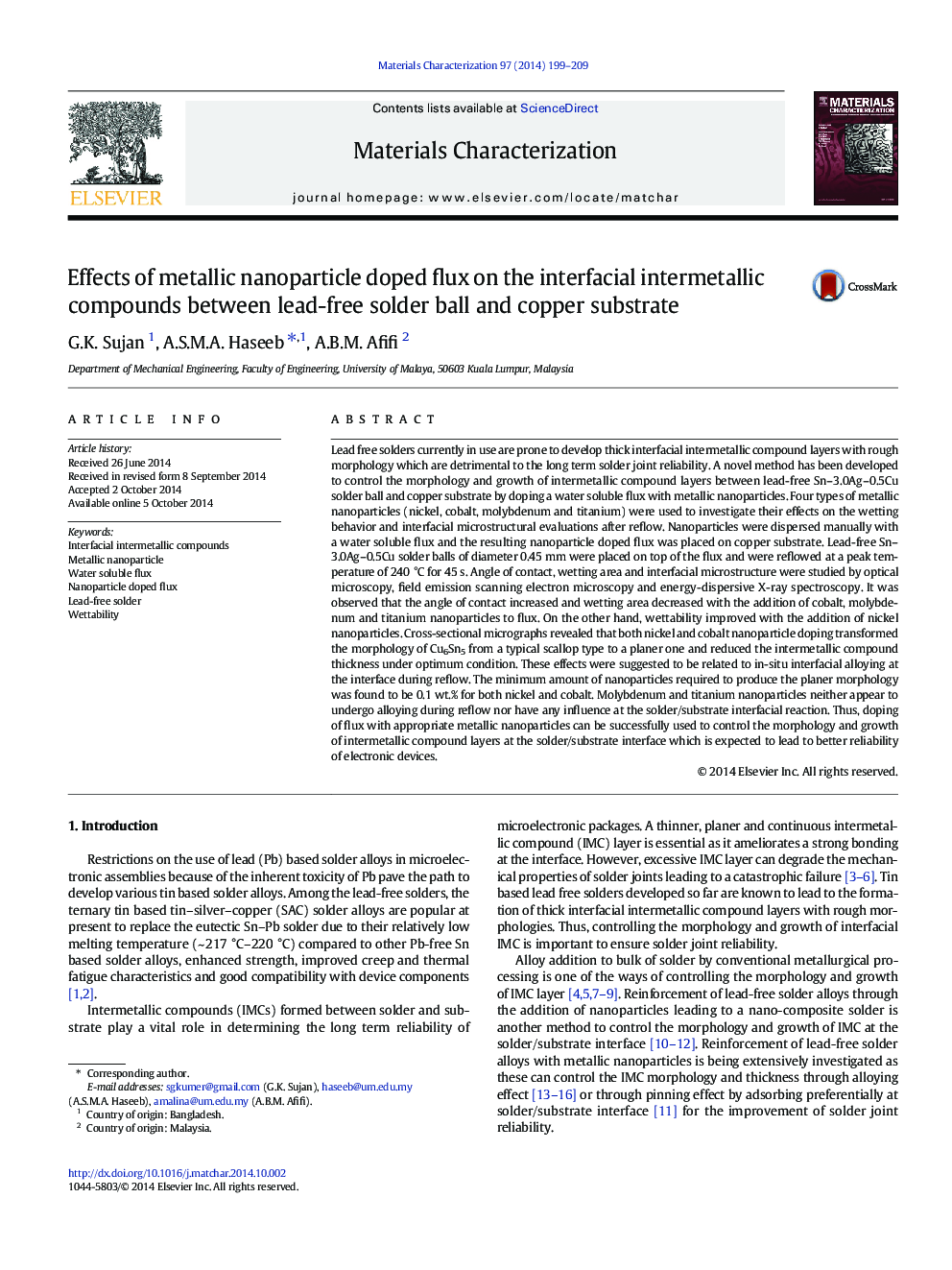| کد مقاله | کد نشریه | سال انتشار | مقاله انگلیسی | نسخه تمام متن |
|---|---|---|---|---|
| 7970804 | 1514390 | 2014 | 11 صفحه PDF | دانلود رایگان |
عنوان انگلیسی مقاله ISI
Effects of metallic nanoparticle doped flux on the interfacial intermetallic compounds between lead-free solder ball and copper substrate
دانلود مقاله + سفارش ترجمه
دانلود مقاله ISI انگلیسی
رایگان برای ایرانیان
کلمات کلیدی
موضوعات مرتبط
مهندسی و علوم پایه
مهندسی مواد
دانش مواد (عمومی)
پیش نمایش صفحه اول مقاله

چکیده انگلیسی
Lead free solders currently in use are prone to develop thick interfacial intermetallic compound layers with rough morphology which are detrimental to the long term solder joint reliability. A novel method has been developed to control the morphology and growth of intermetallic compound layers between lead-free Sn-3.0Ag-0.5Cu solder ball and copper substrate by doping a water soluble flux with metallic nanoparticles. Four types of metallic nanoparticles (nickel, cobalt, molybdenum and titanium) were used to investigate their effects on the wetting behavior and interfacial microstructural evaluations after reflow. Nanoparticles were dispersed manually with a water soluble flux and the resulting nanoparticle doped flux was placed on copper substrate. Lead-free Sn-3.0Ag-0.5Cu solder balls of diameter 0.45 mm were placed on top of the flux and were reflowed at a peak temperature of 240 °C for 45 s. Angle of contact, wetting area and interfacial microstructure were studied by optical microscopy, field emission scanning electron microscopy and energy-dispersive X-ray spectroscopy. It was observed that the angle of contact increased and wetting area decreased with the addition of cobalt, molybdenum and titanium nanoparticles to flux. On the other hand, wettability improved with the addition of nickel nanoparticles. Cross-sectional micrographs revealed that both nickel and cobalt nanoparticle doping transformed the morphology of Cu6Sn5 from a typical scallop type to a planer one and reduced the intermetallic compound thickness under optimum condition. These effects were suggested to be related to in-situ interfacial alloying at the interface during reflow. The minimum amount of nanoparticles required to produce the planer morphology was found to be 0.1 wt.% for both nickel and cobalt. Molybdenum and titanium nanoparticles neither appear to undergo alloying during reflow nor have any influence at the solder/substrate interfacial reaction. Thus, doping of flux with appropriate metallic nanoparticles can be successfully used to control the morphology and growth of intermetallic compound layers at the solder/substrate interface which is expected to lead to better reliability of electronic devices.
ناشر
Database: Elsevier - ScienceDirect (ساینس دایرکت)
Journal: Materials Characterization - Volume 97, November 2014, Pages 199-209
Journal: Materials Characterization - Volume 97, November 2014, Pages 199-209
نویسندگان
G.K. Sujan, A.S.M.A. Haseeb, A.B.M. Afifi,